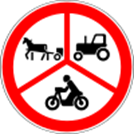Driving in Lithuania
Road rules in Lithuania
When you are hiring a car abroad, it’s useful to be prepared for the different driving laws in the country you are travelling to as well as checking the documents you need to carry.
To help make your trip to as smooth as possible, we've put together some of the key road rules in Lithuania.
- These rules are to be used as a guide and are subject to change. Please check with your Avis representative if you have any questions.
- Your Avis representative can advise you on toll and road charges before leaving the Avis car hire location and whether snow tyres or chains are needed.
Take a look at our Lithuania location page for ideas, travelling tips and booking information.
Frequently asked questions
What side of the road do they drive on in Lithuania?
In Lithuania, they drive on the RIGHT-HAND side of the road.
What are the driving requirements in Lithuania?
The legal driving age is 18. However, you must be at least 19 years old to hire a car.
Can I use my UK driving licence in Lithuania?
Yes. You don’t need an International Driving Permit (IDP).
Is there anything I should carry in the car when driving in Lithuania?
If your headlights can’t be adjusted, by law, you must carry headlamp converters (anti-dazzle stickers). In case of a breakdown, it’s also compulsory to have a warning triangle in your vehicle.
Are there any rules on on-street parking I need to know in Lithuania?
Parking hours and prices depend on which zone you’re in. In Vilnius there are 4 zones: blue, yellow, green and red.
Are there special road rules I need to know for driving in Lithuania?
Winter snow tyres are compulsory from November to April.
What are the laws on overtaking in Lithuania?
Overtake from the left.
Can you turn right on a red light in Lithuania?
You may turn right at a red light only if accompanied by a green arrow signal. However, you must stop before the ‘Stop’ line and give way to pedestrians.
What are the rules on alcohol in Lithuania?
The BAC (Blood Alcohol Content) limit is 0.04%
Are there any unique road signs I need to know in Lithuania?
Residential area

No power-driven or animal-drawn vehicles.

Do the same road rules in place across the whole country?
Yes.
What if I break down in Lithuania?
Wear a reflective jacket, place a warning triangle six-steps behind your car before calling for assistance.
Does Lithuania have toll roads?
Lithuania has a large motorway network with tolls.
How do I pay road tolls in Lithuania?
Tolls are paid for via something called a vignette. These can be purchased online or at petrol stations.
Unique Country Driving Laws
- It is compulsory to call the police to the scene of an accident.
- The use of hand-held mobile phones whilst driving is illegal. You may use a hands free device.
- Cars must keep headlights lit throughout the day. This is applicable all year round.
Speed Limits
For a standard Avis rental vehicle with no trailers:
- Urban areas*: 31 mph (50 km/h)
- Asphalt roads*: 55 mph (90 km/h)
- Rural areas*: (no asphalt): 43 mph (70 km/h)
Highways with a blue or green highway sign:
1st April – 31st October: 80 mph (130 km/h )
1st November – 31st March: 68 mph (110 km/h)
Motorways with blue car sign:
1st April – 31st October: 75 mph (120 km/h )
1st November – 31st March: 68 mph (110 km/h)
*Unless indicated by a road sign.
Child Safety / Seatbelt Laws
It is compulsory for all inside the vehicle to wear a seatbelt.
- Children less than 135cm cannot travel without appropriate child restraint for their size (no matter front or rear seats).
Please note - It is the child’s parent / guardian or vehicle renter’s responsibility to fit the child seat.
Compulsory Equipment in your Avis rental car
- First aid kit
- Fire extinguisher
- Warning triangle
- Reflective jacket
Please ask your Avis representative, whether snow tyres are compulsory at the time of your arrival.
Emergency Services
- Police
- 02
- Ambulance
- 03
- Fire Department
- 01
- European Emergency Number
- 112